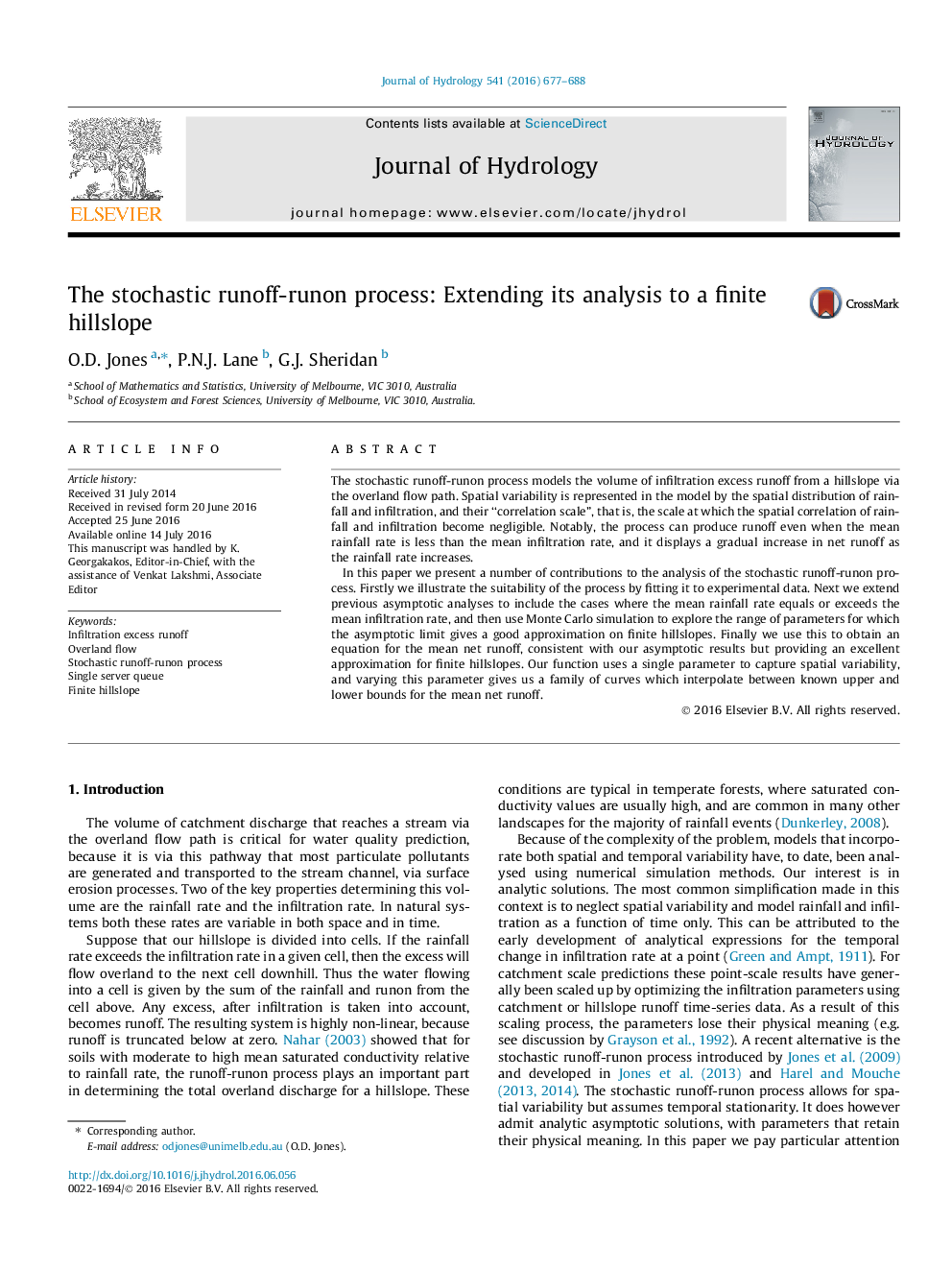| Article ID | Journal | Published Year | Pages | File Type |
|---|---|---|---|---|
| 6409402 | Journal of Hydrology | 2016 | 12 Pages |
â¢Queuing theory is used to model a spatially variable runoff-runon process.â¢Curves that interpolate the upper and lower runoff bounds of Hawkins and Cundy 1987.â¢The effect of spatial variability is captured using a single additional parameter.
The stochastic runoff-runon process models the volume of infiltration excess runoff from a hillslope via the overland flow path. Spatial variability is represented in the model by the spatial distribution of rainfall and infiltration, and their “correlation scale”, that is, the scale at which the spatial correlation of rainfall and infiltration become negligible. Notably, the process can produce runoff even when the mean rainfall rate is less than the mean infiltration rate, and it displays a gradual increase in net runoff as the rainfall rate increases.In this paper we present a number of contributions to the analysis of the stochastic runoff-runon process. Firstly we illustrate the suitability of the process by fitting it to experimental data. Next we extend previous asymptotic analyses to include the cases where the mean rainfall rate equals or exceeds the mean infiltration rate, and then use Monte Carlo simulation to explore the range of parameters for which the asymptotic limit gives a good approximation on finite hillslopes. Finally we use this to obtain an equation for the mean net runoff, consistent with our asymptotic results but providing an excellent approximation for finite hillslopes. Our function uses a single parameter to capture spatial variability, and varying this parameter gives us a family of curves which interpolate between known upper and lower bounds for the mean net runoff.
